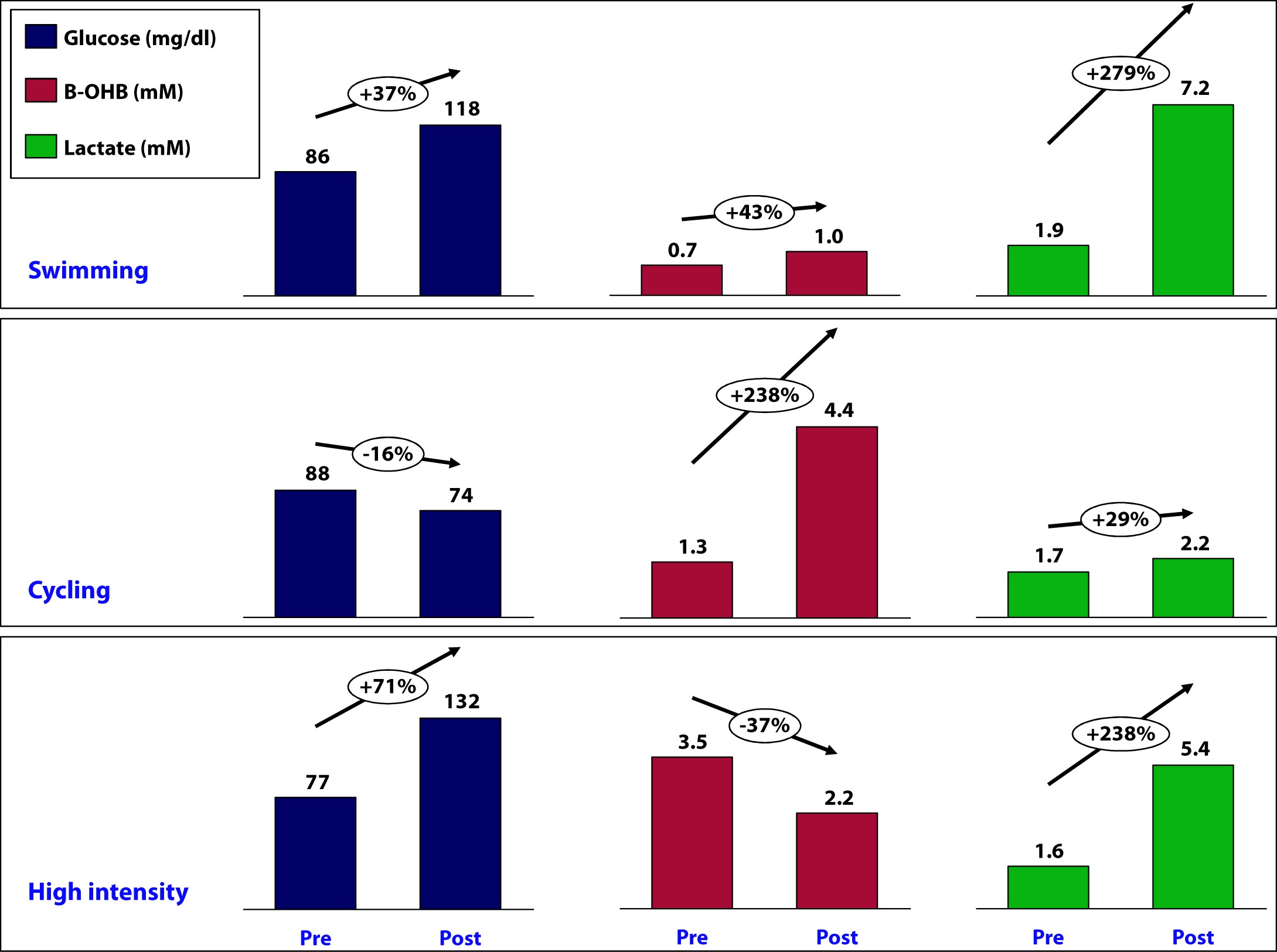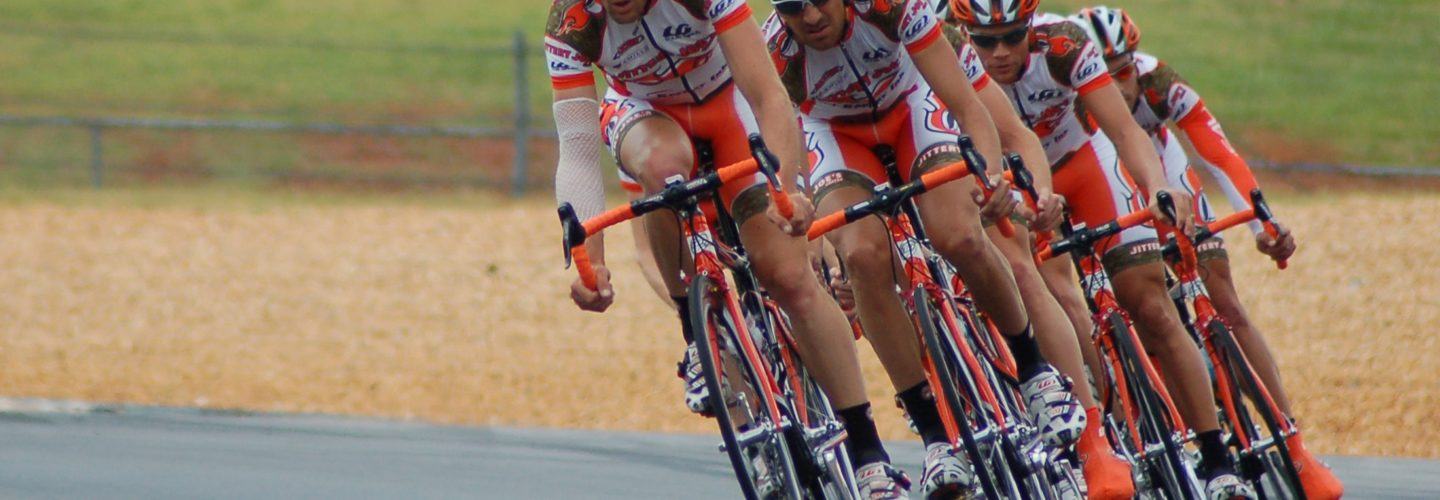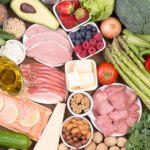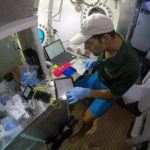I embarked on a self-experiment last weekend to see if I could better understand the interplay between the different types of exercise I do and ketone production (beta-hydroxybutyrate, or B-OHB, to be specific). To be clear, nothing I do with a sample size of one “proves” anything, but sometimes self-experiments can help you formulate hypotheses and, if nothing else, understand how your body works. Consider the parable of the black sheep. If you see even a single black sheep in the field, depending on your field of training, you can draw conclusions:
Three scientists were on a train and had just crossed the border into Scotland. A black sheep was grazing on a hillside. The biologist peered out of the window and said, “Look! Scottish sheep are black!” The chemist said, “No, no. Some Scottish sheep are black.” The physicist, with an irritated tone in his voice, said, “My friends, there is at least one field, containing at least one sheep, of which at least one side is black some of the time.”
My point is, even a self-experiment of one can be good for something.
To test the relationship between exercise and ketosis I decided to examine my blood levels of glucose, B-OHB, and lactate immediately before and after three different types of workouts on three successive days. This interplay is complex and no one knows “everything” about it, including the world’s experts (which I am not pretending to be). I’m going to try to balance a fine line in this post – I want to be rigorous enough to explore the ideas with substance but not too detailed to put you to sleep. I hope I am able to balance these forces adequately.
If any of you are not familiar with the work of Jeff Volek and Steve Phinney, but you are interested in the biochemistry of nutritional ketosis, I recommend getting familiar with their work. The list of people who know more about nutritional ketosis is short.
Let’s take a look at the three parameters I measured in a bit more detail. To give you a sense of what is “normal” here are some guidelines:
Glucose
A normal fasting glucose is generally considered to be between 75 and 100 mg/dL. My mean over the past year has been about 90, but I need to mention two very important caveats:
- On the four occasions I have calibrated my hand-held device with an actual laboratory test, my device seems to run high by about 11 mg/dL, so a measurement of 95 mg/dL on my device is probably closer to 84 mg/dL in reality.
- I carry a genetic trait for a disease called beta-thalassemia. The clinical manifestation of this is that I have much smaller red blood cells than normal (about 65% of normal size). There is some evidence in the literature that this condition prevents some accurate testing of any assay that can interfere with hemoglobin. For example, a test measuring glycosylated hemoglobin suggests I have much more glucose in my blood than is actually measured. In fact, the Glycomark test for mean post-meal glucose level suggested I have an average post-meal glucose level of 190 mg/dL which is obviously not true. In other words, something about my beta-thalassemia seems to interfere with, at the very least, measuring glucose linked to hemoglobin, and possibly measuring glucose in general.
I mention these 2 features to say my glucose levels (unlike B-OHB and lactate which I’ve documented to be very accurate) may be artificially elevated. Here’s the important part, though: the discrepancy seems to be constant, so the increases or decreases seem to be good measurements.
Beta-Hydroxybutyrate (B-OHB)
A normal fasting B-OHB level for a “normal” (i.e., non-ketotic) person is zero. Within a day of fasting, you might expect this number to reach 0.2 to 0.4 mM, and about 1.0 mM within 48 to 72 hours of complete fasting, though this is highly variable among subjects.
If you’ll recall from my discussion of keto-adaptation, the threshold for nutritional ketosis is about 0.5 mM. My normal morning fasting level of B-OHB is usually between 1.0 and 2.0 mM with an arithmetic mean of about 1.4 mM.
Both insulin and glucose (probably by causing the secretion of insulin) suppress ketones. This is why, for example, consuming more than about 50 gm of carbohydrates per day and/or more than about 120-150 gm of protein per day makes it difficult to be in nutritional ketosis – too much insulin secretion.
Lactate
Lactate (or lactic acid) is a byproduct of anaerobic exercise. A normal level is considered to be below 2.2 mM. Basically (I’m oversimplifying a bit), when you exercise in a predominately aerobic capacity, while you do generate lactate your liver is able to match muscle production with clearance via a process called the Cori Cycle (a process in which the liver turns lactate back into glucose).
If you’ve ever done a very intense exercise – like run an all-out mile – and felt like your body is completely seizing up and you are unable to move, you’ve experienced a high lactate. Technically, the lactate is not causing this. Lactate gets a pretty bad rap, and it’s actually a good thing as it allows us to generate energy even when we demand it in an environment where sufficient cellular oxygen is absent. The real “bad guy” is the hydrogen ion that accompanies lactate and interferes with the ability of our muscles to contract and relax properly. However, we use lactate as a proxy for the hydrogen that is actually causing the pain and difficulty in muscle contraction.
For me (personally, though this is probably true for most people) the highest lactate I generate tends to be in all-out activities lasting about 2 minutes which use all muscles in my body (the more muscles you use, the more lactate you generate). Hence, the 200 individual medley (IM) race generates the most lactate in my body: It’s 2-plus minutes of maximum exertion sending pain into every muscle in my body (this event requires a swim, in order, of 50 yards each of all-out butterfly, then backstroke, then breaststroke, then freestyle). A runner would probably concur that the 800 meter (half-mile) run is one of the most painful races in that sport.
The highest lactate I have ever measured in myself, following a 200 IM race, was about 16 mM. I have measured higher levels in several Olympic swimmers, including 20.2 mM in one (as he was vomiting all over the pool deck – for reasons I’ll try to remember to explain in a subsequent post). On my bike, where I’m mostly using my legs, obviously, I think my highest recorded lactate measurement was about 12 or 13 mM following a set of ten 2-minute all-out hill repeats.
I measure my lactate levels using a different hand-held device from the one that measures glucose and B-OHB.
[Another parable, this time about marriage: 2 years ago my father asked me what my wife and I wanted for Christmas. I said “we” wanted a lactate meter with about 200 test strips (I think it was about $900 for everything). He looked at me funny, but figured I knew what I was talking about. When Christmas rolled around and “we” got “our” lactate meter I had to spend a few minutes explaining to my wife why this was a perfect gift for “us” as it allowed “us” to spend lots of time together while she pricked my finger for blood during my workouts. She didn’t really agree with me. I clearly don’t understand women very well – I really thought she would find this device “cool.” Which is why this is a blog about health, not marriage.]
Results from my experiment
Day 1: Saturday (hard swim workout, race pace)
This was a one hour, 45 minute swim with warm-up and cool down. The “main set” was mostly freestyle and butterfly at all-out race pace for distances of 25, 50, 75, and 100 yard intervals with long rest (1:2 – 2 times more rest than swim time) for the all-out 100 yard swims, and modest rest (2:1 – half the rest time of each swim). The single most demanding aspect of this workout took place with about 25 minutes remaining and, though I didn’t measure peak lactate, I suspect it was around 12-14 mM, based on the discomfort I experienced. I was surprised that my lactate level was still as high as it was (see below) 25 minutes later, though I suspect I didn’t cool down as gingerly as I should have, to optimize for maximum lactate clearance.
During this workout I consumed nothing and prior to the workout I consumed my usual 40 mL of medium chain triglyceride (MCT) oil.
At 7:29 am, just before beginning the workout, my glucose was 86 mg/dL, B-OHB was 0.7 mM (which is low for my fasting level), and lactate was 1.9 mM.
Immediately post-workout, at 9:14 am, my glucose was 118 mg/dL, B-OHB was 1.0 mM, and lactate was 7.2 mM.
Day 2: Sunday (long ride, 80% of race pace)
This was a tempo ride covering 104 miles (167 km) with 5,600 feet of climbing. Average pace was 17 mph (about 28 km/hr) with lots of headwind. My average HR over this 6 hour ride was 141 and average power output was between 190 and 200 watts. There were many sections of the ride, particularly on the climbs, where my HR was sustained in the 160’s for 30 minute stretches and power output was above 275 watts (which, for me, means my muscles generate lactate faster than my liver can clear it).
During this workout I consumed the following:
- Two single-serving packets (1 oz) of cream cheese (14 gm fat; 2 gm carb; 2 gm protein)
- 50 gm of super starch, by Generation UCAN mixed in my water bottles (50 gm super starch which, technically, is a carb but does not behave like one with respect to insulin secretion and ketone suppression – I will write a dedicated post on super starch in the future, but if you must try it now, use this code to get a discount: “UCANPA”)
- 2.5 oz of mixed nuts (25% of each almonds, cashews, walnuts, peanuts – 36 gm fat; 14 gm protein; 15 gm carb)
Total intake during 6 hour ride, therefore, was: 50 gm fat; 16 gm protein; 67 gm carb (of which 50 gm was super-starch), for a total of about 750 calories.
About 90 minutes prior to the ride I consumed 4 eggs fluffed with heavy cream, cream cheese, coffee with heavy cream, and my usual 40 mL of MCT oil.
At 7:56 am, my glucose was 88 mg/dL, B-OHB was 1.3 mM, and lactate was 1.7 mM.
Immediately post-ride, at 2:39 pm, my glucose was 74 mg/dL, B-OHB was 4.4 mM, and lactate was 2.2 mM.
Day 3: Monday (dry-land, high intensity training)
On this particular day, it was raining (one of 3 days a year this happens in San Diego), so I did not do the outdoor stuff (including tire flips).
Prior to the workout I consumed nothing other than my usual 40 mL of MCT oil and during the workout I consumed about 4 gm of branched chain amino acids (BCAA) and 10 gm of super starch mixed in my water bottle – so essentially just water.
Immediately prior to the workout, at 6:43 am, my glucose was 77 mg/dL, B-OHB was 3.5 mM*, and lactate was 1.6 mM.
At 7:52 am glucose was 132 mg/dL, B-OHB was 2.2 mM, and lactate was 5.4 mM.
*If you’re wondering why my fasting B-OHB level was so high (recall, I’m usually between 1.0 and 2.0), I suspect it’s at least a partial result of 2 things:
- Residual fat breakdown from the previous day’s long ride and caloric deficit, and
- On Sunday night I ate (no exaggeration) about half a gallon of my wife’s famous zero sugar, high fat coffee ice cream, which must be the closest thing I’ve ever experienced to heroin in terms of addiction potential.
Summary
The figure below summarizes the data from the mini-self-experiment I just described.

What can we learn about the interaction between glucose, B-OHB, and lactate?
How does super starch impact my ketosis?
Is ketosis helping me or hurting me?
Stay tuned for next week, when I will try to interpret these results…
Photo by James Thomas on Unsplash






Peter,
You’ve got a great website here and I really appreciate all of your work here and elsewhere. Based largely on your recommendations/results, I have been on a ketogenic diet for a few weeks and I am feeling great and losing weight (hopefully fat, probably water).
I would like to second the requests of others above for more details on how to build muscle while maintaining ketosis, with specifics around pre-/post-workout nutrition and ideal carb/protein sources. I am planning to enter a mass-building phase in a month or two and I’m a little overwhelmed by trying to optimize for muscle gains without “breaking” ketosis. All of the conventional wisdom for mass building (high protein, high carbs) is the exact opposite of a ketogenic diet. I’m thinking that the right combination of moderately increased protein and carbs (especially Superstarch) with optimized timing might be able to thread the needle between the two opposing diet plans. This would be combined with a fairly typical mass-building workout plan (e.g. high-rep heavy squats, no cardio, lots of rest, etc.). Have you ever tried to do this?
Rory, I just have no deep expertise in muscle building. I’ve never been a bodybuilder, so it’s probably best to look at stuff by Doug McGuff and others. Maybe Lyle McDonald, also. Mike Mentzer is also a thoughtful guy on this topic.
Hello Peter-
I appreciate your willingness to answer so many questions. I have queried for this via your search bar as well as google so I hope it is not a question that you have previously addressed.
Years ago, I took the supplement ZMA when I was into weightlifting. It did have a noticeable positive impact on my sleep. Fast forward to the present day, I am following (very successfully I must add) a strict ketogenic diet and rigorous swimming and dry land workout routine. Based on my results, I think I need to boost my magnesium intake via supplementation. I am considering returning to ZMA supplementation and am curious if the magnesium in this form (magnesium aspartate) would provide the same benefit. What is your experience and/or opinion on ZMA in general?
Thank you in advance,
Brent
My guess is ZMA was most placebo effect.
Nice Article. It’s so me, I’m a d1 college athlete with low hemoglobin levels around 8 or 9, I have cold hands every time (may have thalassemia but the doctor says I’m fine and just deficient in iron) I also weight train 5 times a week and lately I’ve been really tired and would even get headaches after finishing a timed mile, my hamstrings would burn so bad that I would slow down by like 50% and can’t keep pushing myself. I also get pounding in my head after doing an activity. Recently I got an iron infusion and feeling a little bit better but nothing significant. I wonder if it’s my nutrition and reduced carbohydrate intake that causes such low hemoglobin levels. I literally cannot sustain any high intensity activity. I’ve been researching my condition there’re sources that say that people get put on steroids in order to treat this conditioning.
Could it be related to my carbohydrate intake? Should I eat more carbs or this is the medical condition that I have to live with? What would you recommend?
Thanks!
No way of knowing without doing a real workup. All hormones. But Hb of 8 or 9 is unacceptable for a young healthy person and should be treated (EPO, transfusion) if a source can’t be found and fixed.
Max have you been checked for IGA antibodies?
I had low hemoglobin, headaches and fatigue, and I was on a low carb diet, eating lots of steak and still anemic. My doctor did a whole lot of tests and nothing was found, went to another doctor and right away she said “I think you are gluten intolerant” and she order some tests, the right tests.
I went gluten free even before getting the results back. I felt better almost right away. The results showed I had very high levels of antibodies against gliadin.
I must say I did not know gluten is in everything! I was not eating bread at all, but I was poisoned with gluten from other sources until I completely cleaned my diet. My hemoglobin is back to normal, I feel and look younger, have lots of energy, no headaches, I know now that low hemoglobin is common on celiacs, and people who are non celiac gluten intolerant; although I have no gastrointestinal symptoms, I was not absorbing iron from my diet probably due to inflammation in my gut.
Even if you have negative test results, you could try going GF.
I’d like to know if anyone else gets a debilitating muscle fatigue with the kind of exercise routine I have, and what to do about it. I’m male, 56, 6’0” 150 pounds, ~5% body fat. Was a competitive cyclist into my early 40s; now I just do relaxing 1-hour rides 6 days a week, and push one day a week, either cycling 24 miles with ~2000’ gain, or fast-paced (4+mph) hiking up a 3.5 mile 2300’ local mountain peak. Been doing keto for ~2 months. Now with keto as well as in the 15 years before keto, I experience unusually high muscle fatigue in my legs, especially upper quads, 1-2X/yr and lasting from several weeks to several months (I don’t feel it during normal daily activities, only when I do moderate or more exercise (70+% of MHR). I don’t think that I’m doing any high-intensity exercise that would explain this fatigue. I was hoping keto would eliminate this, but it hasn’t. I’m doing ~50g carbs, 100-125g protein, 85% fat; I supplement Mg, get enough sodium. Used to weigh 155 but I’ve lost 5 pounds on keto – not my intention; I was just looking for a healthier way to eat. Any thoughts on what might be happening to cause this muscle fatigue?
Hi Peter,
suppose you were doing the workouts above without ingesting any carbs. Would you expect any symptoms, and if yes what kinds?
Thanks!
No symptoms today. Three years ago, may have been a bit light-headed at times.
Hi Peter, I discovered your site at the recommendation of my physician a year ago and what a life changer this has been. Can’t thank you enough. I am an avid cyclist and intend to do my first century ride this year (at 55 years old). Could you give my some advice on nutrition before and during the ride. This is my biggest goal to date and don’t want to blow it! Thanks again for your great work.
Hello Peter. Thanks for this website. Has really helped me understand my body better and fit into some old jean sizes! Was curious about your Beta-thalassemia. I have congenital spherocytosis, which sounds similar to B-T in that spherocytes have reduced carrying capacity of hemoglobin (25%) due to their shape and there are fewer spherocytes (25% fewer) in existence because they are more fragile and the body cannot replenish. Bottom line is a “low grade” anemia, possibly resulting in a 46% decrease of oxygen capacity without taking into account body compensations. I know the body compensates to some extent, but would imagine there are some implications to the anemia, pertaining to energy systems, muscle types, potential compensations, etc. I’m not looking for personal information, just looking to see if there are implications that you’ve found on your journey and if so, where I might start hunting down background information. Thought for sure the low grade anemia might affect aerobic energy sports, but it seems like you do just fine. Seems like when my kids who are outrageously carb fueled at the moment, go into aerobic exercise, they have significant hurdles. Yet growing up, my brothers and sisters seemed to beat the anemia, with a pretty intense approach to aerobic activity. Almost seems to me that the intense approach probably keeps the bodies out of the aerobic zone, probably in the glycogen or perhaps even the phosphate based energy system. As we get older, much of what we become concerned about is helping our kids. Before I resort to the old tried and true “get out there and try harder” I wanted to try and understand what was going on a little bit more. Keep up the good work. Thanks again for the website!
Beta-thal trait does result in a reduced Hct, which does lower oxygen carrying capacity. In me, it’s about 10-20%. At much larger reductions like you describe, it would definitely make the aerobic ceiling lower.
Hi Peter,
I “discovered” your site after doing a search on ketosis and beta-thalassemia. I have beta-thalassemia and I am currently on a diet (Dr. Bernstein) where my ketosis levels are monitored 3x/week using urine samples and Ketonstiks. I seem to get trace amounts of ketosis and for some reason after 2 weeks i can’t seem to maintain the ketosis state, despite my best efforts to adhere to the diet. Your reference on your website seems to indicate that because of the beta-thalassemia my glucose levels might be high and therefore I am getting perhaps a false negative for ketosis? Also, I read that asparatame can elevate glucose levels as well?!
Any advice you have about this would be MOST appreciated!!!
Many thanks in advance!
Hello Peter,
I am curretly keto-adapted and apply IF (leangains). I have MS and am on the Wahls paleo plus protocol combined with the AIP and potato starch. At the moment I cannot stand but am doing excersizes at the rehab-centre to make it possible again. Now I start to feel lightheaded when attempting to stand
What can I do best to tackle this?
Thanks.
Saskia
Hi Peter,
In attempts to enter ketosis, I’ve noticed elevated levels of cortisol, which accelerate muscle loss.
Have you compared cortisol levels between states of glycolysis and ketosis?
If cortisol is not, in fact, elevated during ketosis, what strategy do you use to minimize cortisol production (and hence muscle loss) when transitioning from a state of glycolysis to a state of ketosis?
Thanks to you, I’m better educated on ketosis and appreciate the time you dedicate here.
Amir
Well, your question is pretty complicated and don’t lend itself to a short answer. Short answer is that phosphadityl serine can keep cortisol in check.
Peter,
I didn’t know you have thalassemia, I was trying to research the topic for a friend who is suffering from beta-thalassemia as well. She is experiencing anemia and general fatigue and conventional medicine isn’t much help. Can you shed some light on the subject? Or, do you have a post about this?
Off-topic… Isn’t the beta-thalassemia trait protective against heart disease?
Not to my knowledge.
Every time I read this I wonder about your wife’s ice cream recipe. I am a t1 diabetic, been following strict low carb for over a year and been following a ketogenic diet since September. I made the transition to this diet for endurance training and racing which along with SS has been hugely successful in allowing me to maintain blood glucose control.mBut I digress…. Is it possible for you to share your wife’s ice cream recipe? I love coffee and ice cream but have not had it in over a year. My sweet snacks are essentially stevia coated roast nuts and butter cream frosting using Swerve in confectioners form.
If you can share her recipe I would be most appreciative.
Thanks,
Ron
That is a bummer.
Hey Ron,
Type ice cream in the search Bar. Use Ctrl F to go through the different posts.
Hi,
Thanks for all this terrific information.
You mentioned your total intake during a 6 hour ride was 50 gm fat; 16 gm protein; 67 gm carb (of which 50 gm was super-starch), for a total of about 750 calories…but how many total carbs do you eat for the etnire day when you go on long rides to make sure you stay in NK….do you have to limit your carbs at other meals or do the carbs in super-starch and/or the carbs burned during the ride allow you to consume additional carbs throughout the day? Sorry if you’ve covered this before, there is just so much information I couldn’t find anything about this.
Also, how do you figure out how many calories (and for that matter protein and fat) to consume on a ride given you are burning 750 kcals per hour. If you are in NK, I get that you will be accessing your fat stores to supply energy….. super-starch has about 100 calories per package and you consumed 750 calories during the ride – did you need these extra calories above and beyond the superstarch so you didn’t bonk?
I’m a long-distance (female) cyclist who has been on a low carb lowish fat/calorie diet for about two months (same old story – trying to lose weight) and I’m having trouble with energy levels towards the end of a 100 km ride. I’m training for a 380 km weekend tour. .I do better on this diet when not exercising, but enjoy riding too much to stop….so far I’ve tried increasing my calories before rides (with eggs and a bit of cheese to stay in NK – I’m a vegetarian)…but with limited success…so I was wondering about trying super-starch, but then can’t figure out if or how I need to modify my daily intake of carbs and caloriies accordingly so I continue to lose weight.
Also, I always thought ketosis meant fat loss, so I read your other post with interest on this topic and suspect I am one those people who do need to limit fat intake…so upping my calories for rides by consuming fat may be counterproductive. Holy smokes this is complicated!
I realize I probably just need to experiment more, but any advice on how to balance all this would be greatly appreciated.
Firstly, Thanks very much for detailed explanation of your test results and experience 🙂
Is there any answer for the above comment? Good question..
Do you have any idea to use a gel (such as maltodextrine) in the middle of training? How does effect the insulin and ketone level?
As far as I know, when we are exercising our insulin is blunted, (Z3 tempo ride or above for example..) we do not get a strong insulin response, so the insuling spike will be minimal even we use high glisemic content.
Besides, UCAN super starch vs maltodextrine test result is only for resting state. There is no any test results for during the activity, so is there any advantage to use UCAN instead of any traditional gels during the activity? What do you think?
Thanks,
Hi Peter
Just a couple of questions re: timing of blood ketone measurements. Post exercise, are you checking your levels immediately on cessation, or an hour or two post exercise? Also, for someone checking they’re in NK periodically, do you recommend fasting tests, or bedtime testing? Any thoughts?
I know I am late to the show but really was intrigued looking over your site when I was researching low carb/ketosis and endurance sports. Being a 70.3 athlete, I had a short question that I didn’t come across yet. In reference to VO2 intervals or another similiar type workouts aimed at increasing FTP on the bike or pace on the run, how long (as a reference) till these don’t feel like I made a mistake moving to this type of diet…all my numbers have crashed…quite depressing actually…I am on week 2 and based on my training, carb depletion happened quite fast…also, you were first site that mentioned that ratio’s actually decrease carb intake instead of staying the same…
Hi Peter, In this article you mentioned you consumed about 50g of carbs in a long-training session (6 hour bike ride). How much would you recommend during a race, say a Marathon? Would you consume more under those conditions or stick to your training practices? Somebody like Cordain recommensd something like 50-75 g per hour, which is way more than you are getting.
Can’t answer that question as it depends on the fat adaptation of the individual and the intensity of the effort.
Hey Peter,
Try adding pink Himalayan salt.. about a full spoon early in the morning and a little in your workout water. Thats pretty much the healthiest way to get all ur sodium needs and minerals.
As far as Ketones measuring.. I can only get high readings (above 1.0) when fasting over 24h.. Seems like my normal numbers read from 0.3 to 0.6 through out the week, which I think is low, considering I eat almost no carbs and moderate protein. Today for an exemplo.. woke up and ran 11km in a fasted state.. and only got 0.6 on my ketone reading when got home. Should I need more time to get those readings higher?
By the way. a year ago Ive done a full ironman totally fat adapted… no carbs, nos gels.. only mct, pink salt and some protein during the race.
Very impressive, Diogo. What do you think makes the Himalayan salt unique?
re: What do you think makes the Himalayan salt unique?
I’m not Diogo, but it may be more about what’s NOT in it, than what’s in it. The trace minerals may be more elegant than essential, but are probably not harmful if they are representative of concentrations in the original ancient sea water.
If it’s coarse mined salt of credible provenance and stewardship, it lacks:
• vs. generic “sea salt”:
novel or excessive pollutants from modern evaporated sea water
• vs. refined finely ground salt from any source:
anti-caking agents, often grain-derived
• vs. refined salt of any source and granularity:
processing residues like ferrocyanide, aluminum silicate and ammonium citrate
Coarse mined salt will also usually lack fortification with iodine, but condiment and cooking salts are not a reliable way to get iodine.
Provenance and stewardship?
Are we sure that Himalayan is not just Pakistani road salt?
All food salt is sea salt. The questions are how long ago it was water, contaminants since then, what’s been subtracted, and what’s been added. My family uses a coarse pink Himalayan, but I couldn’t at the moment tell you a brand name.